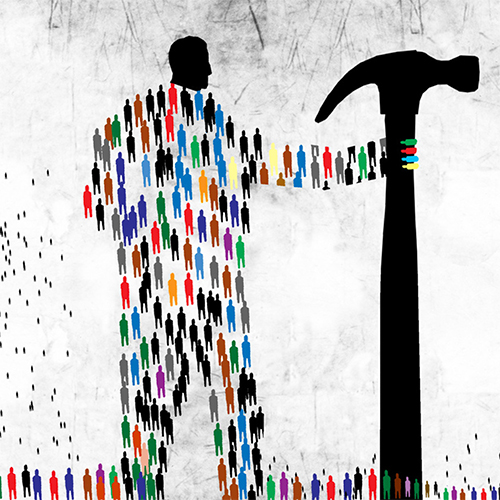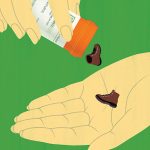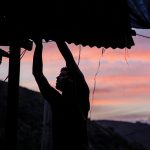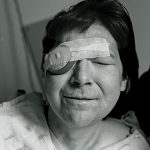public health
September 16, 2020
Double trouble
With flu season coming, doctors and public health officials worry that an outbreak of influenza in the midst of the COVID-19 pandemic could wipe out our health care system.
September 11, 2020

For our health
The UW is putting its combined brainpower into population health, improving lives around the world.

Our lives, disrupted
We asked three UW experts—a historian, a leader in education and an expert in infectious disease—how we might use this time of challenge and change to plan for a better future.
June 24, 2020

Students step up
Students from across the university have volunteered to assist in a variety of support efforts.
June 4, 2020

Smallpox slayer's wisdom
William Foege, ’61, was instrumental in wiping smallpox off the face of the Earth. The lessons he learned in that fight offer wisdom as we face COVID-19.
May 15, 2020

Front and center
With compassion, innovation and empathy, public health leader Patty Hayes strives to make life better for all of us.
December 9, 2019

Building pays tribute
The Hans Rosling Center for Population Health is a key part of the University’s public health mission.
September 2, 2019

Saving time
Benefits to daylight saving time? Let me shine some light on the ways it makes life better.

Smoke season
In the last five years, wildfires have grown larger and lasted longer, making summers uncomfortable and unhealthy in the Methow Valley.
March 1, 2019

Natural elixir
Spending time outside is a sure-fire way to feel better. But researchers still don't know why that is.
November 30, 2018

Safe travels
Author and traveler Chris Sanford shares 10 bits of wisdom from his book, “Staying Healthy Abroad: A Global Traveler’s Guide.”
August 30, 2018

The heart of Puerto Rico
In the aftermath of Hurricane Maria, a team of UW engineers and scientists went to Puerto Rico to learn and to help.
June 4, 2018

Rethinking drugs
Ingrid Walker wants to change the way media and government frame our perceptions about illicit drugs, and the people who use them.

Drug price isn't right
There’s a new blockbuster drug that could save the lives of thousands of people with type 2 diabetes in the U.S.
March 1, 2017
![If you are a Hispanic or African American woman diagnosed with breast cancer, your chances of a good outcome—and sometimes even of surviving—are not as good as that of a Caucasian woman. It’s an unfortunate fact in America’s health care system. Just ask Ali Mokdad. The UW professor of global health conducted a landmark study of 29 cancers and U.S. deaths by county from 1980-2014. What he uncovered was beyond sobering. Although deaths from all cancers combined fell by 20 percent in the U.S. as a whole, cancer rates are actually rising in 160 counties that had predomoniantly lower income and minority residents. In some counties, death rates are more than 20 times higher than average. “In a country where we spend more than anyone else on health care and we debate health all the time, it surprised me to see such huge disparities at the county level. We are leaving people behind in some places where the cancer rate is increasing,” says Mokdad, lead author on the study that was completed at the UW’s Institute for Health Metrics and Evaluation. “You see certain counties where life expectancy is as high as anywhere in the world and other places where the life expectancy is like countries in Africa and Asia.” Medical science can’t always explain why a particular cancer occurs more often in one part of the U.S. than in another. For example, in the Puget Sound area, people tend to get less cancer overall and have better survival rates than in places such as the Deep South, the states bordering Mexico and the Southeast. On the other hand, Puget Sound residents appear more vulnerable to brain cancer. And this area has seen higher rates of some types of blood cancer with higher death rates than in other parts of the U.S. “It’s hard to speculate on reasons. Something else is going on, but it’s very important to know that it’s a problem,” says Mokdad. In general, disparities in cancer and death rates are affected by a host of factors: lifestyle, access to cancer screenings, patient compliance, access to quality care and proximity to quality treatment. “The question is, how can we bring prevention to the forefront of what we are doing,” he adds. “It’s not enough to have excellent treatment.” The sad truth is that disparities in health care access, treatment and outcome hit communities of color especially hard. Breast cancer is a primary example. African American and Hispanic women are more likely to have more aggressive forms of cancer, to be diagnosed with more advanced cancer and to have worse outcomes. Lupe Salazar, associate professor in the Division of Oncology, says underrepresented minority women are also more likely to receive treatment that fails to meet recognized standards of care. “Before the Affordable Care Act, we had patients at the Seattle Cancer Care Alliance who couldn’t get the full complement of services. For example, the Medicaid vouchers wouldn’t cover PET Scans,” says Salazar, ’02, ’03. PET scans are vital in pinpointing the location and severity of cancer. But they are expensive; the average cost of a PET scan ranges from $3,000 to more than $12,000. Minority women, particularly if they are low income or single parents, are also much less likely to participate in clinical trials. Government funding agencies always ask researchers to recruit from minority populations, “but [there is] nobody to give you resources or funding for things like paying for translators for help with getting consents,” Salazar explains. “It’s also very hard to enroll patients who don’t have a computer or a way to log on to clinicaltrials.gov or a way to find the database of experimental treatments.” Health disparities plague other communities including immigrants. India Ornelas, ’99, assistant professor in health services, and Vicky Taylor, research professor in health services, are working to increase the number of refugee women who receive regular screenings for cervical cancer. They created a video to build awareness for non-medical audiences. Collaboration is absolutely vital to addressing these inequities in diagnosis and treatment. “We are going to come together to figure out what we can build on and what we can deliver,” says Salazar. “We hope the Population Health Initiative will improve the health care of the poorest people, whether you’re in the Pacific Northwest or a developing country. We will see.” n—Julie Garner](https://magazine.washington.edu/wp-content/uploads/2017/02/live-better-150x150.jpg)
Live better
Where we live affects our quality of life in many ways, including our health, happiness and social equity.
February 28, 2017
Failure to grow
About 162 million children worldwide under the age of five are considered too short for their age—a growth failure called stunting.
June 1, 2016

Dying with dignity
Columns staff writer Julie Garner talks to two men facing death, and the people who care for them.
March 1, 2016

How does baby learn?
Researchers with the UW's I-LABS break new ground with their discoveries of how young minds develop.
September 1, 2015

True to self
As Terra Hoy and others in the UW community know, changing genders is fraught with challenges -- emotional, physical and societal.
